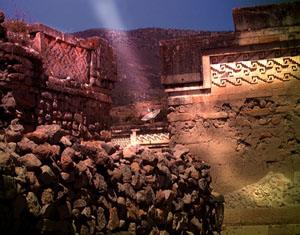
|

|
As we move forward in this
digital era, and as communications such as the internet take center stage,
economic issues become central to our understanding of what we are trying
to accomplish. Photography is right there in the midst of all these questions.
But let us look at photography within the larger picture. If you are reading
this you already belong to that sector of people considered as the "first
world", no matter from where you are coming from. If we ever needed proof
of how news are today a global and instant affair, we have to go no further
than to observe what happened around the death of Princess Diana, or what
happened to the financial markets during their collapse in Asia. But let us be clear, the fact that there was this world wide response to the news, does not suggest that all the people touched by such events actually participated in their consumption. Even though they will all suffer -in the case of the market declines- as a result of these occurrences, many have not even a clue of what has transpired. We are living in a period where the people live not only in different time zones, but in different time realities within those time zones. Some live in the digital era, and then the majority live ignoring it's existence -willingly or not-, even though their destiny is being profoundly influenced by it. One can not extricate oneself from the digital era by wishing it away, any more than one could ignore the reality of the "cold war". The ripple effect of it shear existence touched every human being no matter how distant they felt themselves to be from any direct involvement. I am thinking of a family of campesinos in Nicaragua; what did they know of the cold war, yet no one would doubt that they were caught in the literal cross fire of such a war. At ZoneZero we are reaching
more people and from all over the world in ways which would have been unthinkable
only a few years ago. In the span of only 24 months we have gone the equivalent
of having silent movies become spoken ones. An effort that took the movie
industry decades to achieve was accomplished on the internet in only two
years. In the field of photography this is particularly true. Much as in the Asian financial markets, the market for photojournalistic imagery has seen a steady decline. In the advertising field, photographers who do not have the needed technology to produce digital imagery (altered or not) are increasingly loosing clients. Teachers who do not have the needed knowledge in digital photography are finding it harder and harder to keep their positions, as students demand from their schools, to be taught all these new technologies. The ten thousand people at Kodak who have just been fired are yet another testimony that no one is immune to the changing realities brought about by the digital revolution. Not even Kodak. The price of digital cameras have come down rapidly and the quality has increased with each new generation. Computers cost less and less with increasingly higher performance ratios. Low cost printers being able to produce photographic quality prints was something that did not exist a scant five years ago. Film will be replaced with little cards (PCMCIA cards) the size of credit cards which will make the cost of film an almost irrelevant issue. Video cameras that will offer interchangeable options of moving and still imagery at high enough quality to become of serious use are already here. Still pictures that can be panned 360° making the point of view of the photographer a moot issue. All of this and much more is what the digital era has in store for us. Let us not forget that economic
factors are driving all these transformations affecting the world of photography.
These same issues are also driving many of the cultural transformations
of how and where photography can and will be used. I am reminded of a letter John Berger wrote in Le Monde to Subcomandante Marcos in the jungle of Chiapas, Mexico. There he quotes himself: "In a letter written
in prison in 1931, Antonio Gramsci told a story to his two sons, the younger
one whom he would never be able to meet, due to his confinement. A little
boy has gone to sleep with a glass of milk on the floor next to his bed.
A mouse drinks the milk. Upon wakening the child sees the empty glass and
starts to cry. So the mouse goes to the goat and asks for a little milk.
The goat doesn't have any milk, it needs grass. The mouse goes to the field
and there is no grass due to the draught. The mouse goes to the well but
the well doesn't have water because it needs to be repaired. So the mouse
goes to visit the mason but he doesn't have the needed stones to make the
repairs. Then the mouse goes to the mountain and the mountain doesn't want
to hear about anything, it appears like a skeleton since it has lost all
it's trees. In exchange for some stones, the mouse tells the mountain, the
child when it grows up will plant some oak and pine trees on your mountain
side. The mountain agrees and gives all the needed stones. Later the child
had so much milk that it bathed in it. Later as he became a man he continued
to plant trees, now they hold back the erosion and the land has become fertile."
November 9 1997 support@zonezero.com |